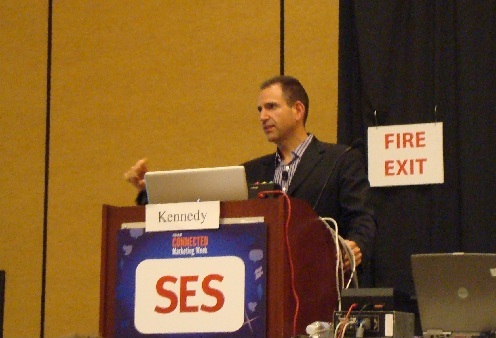 The average conversion rate for a website is around 3 percent, but many websites convert at 10 percent or higher. What are they doing right that you’re missing?
The average conversion rate for a website is around 3 percent, but many websites convert at 10 percent or higher. What are they doing right that you’re missing?
Bryan Eisenberg, NY Times Bestselling Author gave a solo presentation on the secrets of top converting websites and how you too can achieve high conversion results. Following is a summary of his presentation.
What exactly is conversion rate? In essence, conversion rate is a measure of your ability to persuade visitors to take the action you want them to take. It’s a reflection of your marketing effectiveness and customer satisfaction. For you to achieve your marketing goals, visitors must achieve their goals first.
No one should settle for a conversion rate of less than 10%. Looking at top retailers, many have conversion rates greater than 15% monthly. What are they doing that you’re not?
Well, the reason is everybody’s website sucks. There just aren’t enough resources to make it perfect.
Increasing conversion rates is both simple and difficult. The process is not really that mysterious. An analogy would be considering how to become the best basketball player – to do this, it’s a fairly obvious path: practice and dedication plus patience. Michael Jordon didn’t become great without practice. It has to be part of your corporate metabolism to make website changes.
The three basic items that impact conversion:
- Relevancy
- Credibility
- Navigation
With that in mind, following are the 21 secrets of top converting websites.
1. They communicate their unique value propositions and unique campaign propositions. There is no product, no brand that is universally known. If users don’t find a reason to buy, they’ll leave.
2. Their offers are persuasive and relevant. Understand what offers actually motivate your customers and provide them.
3. They reinforce the offer site-wide. Every page should seed the offer (and make sure the offer is persuasive).
4. Maintain scent – in other words, similarity between pages to ensure you don’t lose visitors. Effective online marketing maintains consistency and meets expectation. Elements need to be connected as part of a process. So if you have a certain type of creative on one page or ad, it should also be present during the next step of the conversion process.
5. They understand the customer buying process. Consider the issues your customers face when purchasing a product and promote them clearly.
6. You must appeal to different personas. Different people make decisions differently – some people are more left brained, some right – some logical, some emotional. Personas build predictive models.
7. They don’t do slice & dice optimization. This is what tool vendors promise about multi-variate testing, but it’s in many cases the wrong approach. Consider the 4 personas: spontaneous (seek top sellers), humanstics (care about reviews), methodicals (find by genre) and competitiveness (search). When you understand your customers, you can test more effectively. Test for impact, not variation.
8. Leverage social commerce: use the voice of the customer. Amazon is a great example; they get customers to help promote the product.
9. They use reviews for navigation – i.e. show ratings and reviews (top products, sort by rating, etc.). This can directly increase conversion rate significantly.
10. They use social commerce for conversions.
11. They use social commerce for credibility: adds a layer of social proofing to products (other people thought something was great, so you will too).
12. They use social commerce for user testing. User testing used to be cost-prohibitive, but it is now within everyone’s reach.
13. Use persuasion principles such as scarcity, reciprocation, authority, consistency, consensus, liking and urgency. Consider using your thank you page to upsell in a compelling, relevant way.
14. They even make forms more engaging. Anything you can do to make a form not look like a “DMV form” helps increase conversions. Don’t make people register to buy from you – use a thank you page for that.
15. They provide point of action assurances. Leads lose effectiveness the longer you wait to respond to them. Set expectation for when a response will be sent.
16. They keep you in the process. Make it clear to users what they’re getting at every step of the way. Use it to keep people seduced and going through the process.
17. They consider email preview.
18. They budget for experience. Most people don’t have a traffic problem, they have a conversion problem. Take the time to build better customer experiences. That’s Amazon’s secret, at any given time they have around 200 tests running on their website.
19. They utilize a system for prioritization. If you have a list of 75 items to fix on a website, start simple, not necessarily what you think is highest priority.
20. They make data-driven decisions. The secret to making analytics work is to create a to-do list. Figure out what marketing efforts or parts of your site have challenges.
21. They know how to execute rapidly. The one thing about the web is how fast things change. Execution is not an event, it’s a way of life.


